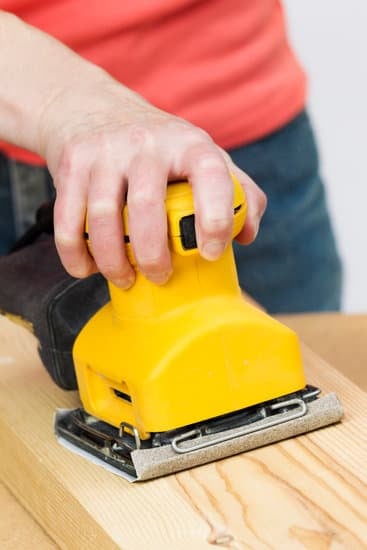Are you looking to make renovations or upgrades to your home but don’t have equity? In this article, we will explore how to get a home improvement loan with no equity. Home improvement loans can be a great option for homeowners who want to enhance their living spaces but lack the necessary equity. Understanding the concept of these loans and the various options available is crucial for those in need of financial assistance for home improvements.
Equity plays a significant role in obtaining traditional loans, as it serves as collateral for lenders. However, not everyone has built up enough equity in their homes to qualify for these loans. That’s where no equity home improvement loans come into play. These types of loans provide borrowers with alternative ways to finance their projects without needing to leverage the value of their property, making them accessible to a broader range of homeowners.
In this guide, we will delve into the different types of home improvement loans available, such as personal loans, FHA loans, and HELOCs, that do not require equity. We will also discuss eligibility criteria, tips for finding lenders specializing in no equity loans, the application process, strategies for approval, and repayment plans. By understanding these key aspects, you’ll be better equipped to navigate the process of securing financing for your home improvement projects without the need for equity.
Understanding Home Equity
Home equity serves as a crucial factor when it comes to obtaining loans for home improvements. Equity is the difference between the current market value of your home and the outstanding mortgage balance. Lenders often rely on equity as a form of security when providing loans, as it reduces their risk in case the borrower defaults.
This makes it challenging for homeowners who have little or no equity to qualify for traditional home improvement loans. However, there are still options available for those looking to finance their renovation projects without leveraging their home’s equity.
Alternative Loan Options Without Equity
For homeowners who do not have sufficient equity in their homes, there are alternative loan options they can explore to finance their home improvement projects. Personal loans are unsecured loans that do not require any collateral, making them a viable choice for individuals with limited equity.
Federal Housing Administration (FHA) loans are another option that allows borrowers to obtain financing for renovations with lower down payments and more flexible credit requirements. Home Equity Lines of Credit (HELOCs) also provide access to funds without requiring equity upfront, giving homeowners more flexibility in borrowing.
Exploring No Equity Loan Programs
In addition to personal loans, FHA loans, and HELOCs, there are specific loan programs designed for homeowners with no equity seeking to make improvements to their properties. These programs are typically offered by government agencies or non-profit organizations and aim to assist individuals in need of financial support for home renovations.
By researching these specialized loan programs and meeting their eligibility criteria, homeowners can access the funding they need without relying on traditional equity-based loans. Understanding the various options available is essential in finding the right loan solution that fits your specific financial situation and renovation goals.
By familiarizing yourself with alternative loan options and exploring specialized no-equity loan programs, you can successfully secure financing for your home improvement projects without relying on traditional equity-based loans. Knowing
Types of Home Improvement Loans
When considering home improvement projects, one crucial aspect to consider is the type of loan that best suits your needs. For homeowners without equity or with limited equity in their homes, there are still several options available to fund their renovation plans. Understanding the different types of home improvement loans can help borrowers make informed decisions on how to proceed with their projects.
Personal Loans
Personal loans are one option for homeowners looking to finance their home improvement projects without using equity as collateral. These unsecured loans typically have higher interest rates compared to loans secured by home equity but offer the flexibility of not requiring any equity in the property. Borrowers can use personal loans for a variety of purposes, including kitchen remodels, bathroom upgrades, or even adding a deck to their homes.
FHA Loans
Another option for those seeking a home improvement loan without equity is an FHA 203(k) loan. These government-backed loans allow borrowers to finance both the purchase of a home and its renovation costs into a single mortgage. FHA loans are popular among first-time homebuyers and those with less-than-perfect credit scores. However, it’s essential to meet the FHA’s requirements and guidelines to qualify for this type of loan.
HELOCs
A Home Equity Line of Credit (HELOC) is another option for funding home improvements without relying on existing equity in the property. HELOCs allow homeowners to borrow against the value of their homes up to a certain limit, similar to a credit card. This revolving credit line gives homeowners access to funds as needed for renovations or repairs. HELOCs typically have variable interest rates tied to the prime rate but offer lower initial rates compared to personal loans.
By exploring these various options for home improvement loans without equity, homeowners can find the best fit for their needs and budget constraints. It’s essential to compare interest rates, terms, and repayment options offered by different lenders before making a decision on how to proceed with funding your renovation project. With careful research and planning, you can find a suitable loan that allows you to enhance your living space while staying within your financial means.
Eligibility Criteria
When looking to get a home improvement loan with no equity, it is essential to understand the eligibility criteria set by lenders. While traditional home equity loans require you to have a certain amount of equity in your property, no equity loans are designed for those who do not meet this requirement.
To qualify for a home improvement loan without equity, borrowers typically need to have a good credit score, stable income, and a low debt-to-income ratio. Lenders may also consider other factors such as employment history and overall financial stability.
One way to increase your chances of qualifying for a no equity home improvement loan is to improve your credit score before applying. This can be done by making timely payments on existing debts, reducing outstanding balances, and addressing any errors on your credit report.
A higher credit score not only improves your eligibility but also helps you secure better interest rates on the loan. Additionally, having proof of steady income and employment can reassure lenders that you have the means to repay the borrowed amount.
Another important eligibility criteria for obtaining a home improvement loan with no equity is demonstrating your ability to afford the monthly payments. Lenders want to ensure that you can comfortably repay the loan without compromising your financial stability. Providing detailed documentation of your income, expenses, and assets can help strengthen your application.
It is recommended to prepare necessary paperwork in advance, including pay stubs, W-2 forms, bank statements, and tax returns. By meeting these requirements and presenting yourself as a reliable borrower, you can enhance your chances of getting approved for a no equity home improvement loan.
| Eligibility Criteria | Details |
|---|---|
| Credit Score | A good credit score is necessary |
| Income Stability | Lenders look for steady sources of income |
| Debt-to-Income Ratio | A low debt-to-income ratio is favorable |
Finding Lenders
When looking for lenders that offer home improvement loans without requiring equity, it is essential to explore various sources to increase your chances of finding a suitable option. One option to consider is online lending platforms that specialize in personal loans or home improvement loans.
These platforms often have a wide network of lenders willing to work with borrowers who do not have equity in their homes. Additionally, traditional banks and credit unions may also offer no equity loans for home improvements, so it is worth checking with local financial institutions.
Another potential avenue for finding lenders that provide no equity home improvement loans is through government-backed loan programs such as the Federal Housing Administration (FHA) loans. FHA loans are designed to help individuals with lower credit scores or little equity access financing for home improvements. These loans often have more flexible eligibility requirements compared to conventional loans, making them a viable option for borrowers in need of funding for renovations without equity.
Furthermore, consulting with mortgage brokers can be beneficial when searching for lenders that offer no equity home improvement loans. Mortgage brokers have relationships with multiple lenders and can help borrowers find the best loan options available based on their financial situation and needs. By working with a mortgage broker, you can save time and effort in finding the right lender who can provide the necessary funds for your home renovation project without requiring equity in your property.
Application Process
When looking to make home improvements but lacking the equity needed for a traditional loan, there are still options available. Knowing how to get a home improvement loan with no equity can be crucial in achieving your renovation goals.
One such option is a personal loan, which doesn’t require any home equity and can be used for various purposes, including home improvements. Personal loans typically have fixed interest rates and repayment terms, making it easier to budget for your projects.
Another alternative to consider is an FHA 203(k) loan, which is specifically designed for home renovations and repairs. This type of loan allows borrowers to finance both the purchase price of the home and the cost of renovations into one convenient mortgage.
Additionally, a Home Equity Line of Credit (HELOC) could be an option for those without equity in their home. A HELOC allows homeowners to borrow against the equity they have built up in their property, providing flexibility in accessing funds for renovations.
To apply for a home improvement loan without equity, you will need to gather important documentation to present to potential lenders. This may include proof of income, employment verification, credit history, and details of the renovation project you intend to undertake.
Lenders will use this information to assess your creditworthiness and determine whether you qualify for a loan without equity. By being prepared with these documents and understanding the application process, you can increase your chances of securing the financing needed for your home improvements.
| Types of Loans | Description |
|---|---|
| Personal Loan | A type of unsecured loan that can be used for various purposes without requiring home equity. |
| FHA 203(k) Loan | A specific loan program that combines the purchase price of a home with renovation costs. |
| HELOC | A Home Equity Line of Credit that allows borrowers to access funds based on the equity in their property. |
Tips for Approval
When seeking a home improvement loan without equity, it is essential to increase your chances of approval by implementing various strategies. Here are some tips to help you secure the financing you need for your home renovation project:
- Improve Your Credit Score: Lenders typically look at credit scores to assess a borrower’s risk level. To boost your chances of approval, work on improving your credit score by making timely payments, reducing debts, and addressing any inaccuracies on your credit report.
- Provide Detailed Project Plans: When applying for a home improvement loan with no equity, it is crucial to have a detailed plan outlining the scope of the project, estimated costs, and expected timeline. This information helps lenders understand how the funds will be used and increases their confidence in approving your loan.
- Show Stable Income: Lenders want to ensure that borrowers have a reliable source of income to repay the loan. To strengthen your application, demonstrate stable employment history and consistent income streams. This can be done by providing pay stubs, tax returns, and other documentation that verifies your financial stability.
By following these tips and presenting yourself as a responsible borrower, you can enhance your chances of approval for a home improvement loan with no equity. Remember to carefully review the terms and conditions of the loan offer before accepting it to ensure that it aligns with your budget and financial goals. With proper planning and preparation, you can successfully finance your home renovation project without needing equity in your property.
Repayment Plans
When considering taking out a home improvement loan with no equity, it is important to understand the various repayment plans available and factors to consider before borrowing. Here are some key points to keep in mind:
- Fixed-Rate Loans: One option for repayment is a fixed-rate loan, where the interest rate remains constant throughout the life of the loan. This provides predictability in your monthly payments, making budgeting easier. However, these loans may have slightly higher interest rates compared to other options.
- Variable-Rate Loans: Another option is a variable-rate loan, where the interest rate can fluctuate based on market conditions. While initial rates may be lower than fixed-rate loans, there is a risk of increased payments if interest rates rise. Borrowers should carefully consider their ability to handle potential payment increases.
- Repayment Terms: When choosing a repayment plan, it is essential to consider the length of the loan term. Shorter terms typically result in higher monthly payments but less overall interest paid over time. Longer terms may offer lower monthly payments but could cost more in interest over the life of the loan.
Additionally, before borrowing for home improvements without equity, individuals should assess their financial situation and determine their ability to repay the borrowed amount. It is crucial to create a realistic budget that accounts for monthly loan payments along with existing expenses and savings goals.
When evaluating repayment options, borrowers should also take into consideration any fees associated with the loan, such as origination fees or prepayment penalties. Comparing offers from multiple lenders can help identify the most cost-effective solution for financing home renovations without equity. By carefully weighing all factors and selecting a suitable repayment plan, homeowners can effectively manage their finances while enhancing their living spaces through home improvements.
Remember that proper planning and thorough research are key when navigating how to get a home improvement loan with no equity. By evaluating different repayment options and understanding all associated costs, borrowers can make informed decisions that align with their financial goals and long-term needs.
Conclusion
In conclusion, getting a home improvement loan with no equity is indeed possible for homeowners who may not have substantial equity built up in their properties. Understanding the different types of loans available, such as personal loans, FHA loans, and HELOCs, can help borrowers make an informed decision based on their financial situation and needs. By exploring these options and understanding the eligibility criteria, individuals can find a suitable loan that fits their requirements.
When looking for lenders that offer no equity home improvement loans, it is essential to do thorough research and compare rates and terms from multiple sources. This diligence can lead to finding a lender that provides favorable terms and conditions for borrowing. Additionally, following the application process diligently and providing all necessary documentation can increase the chances of approval for the loan.
Ultimately, careful planning before taking out a home improvement loan without equity is crucial. Borrowers should consider their budget, repayment capabilities, and the impact of borrowing on their overall financial well-being.
By weighing these factors carefully and considering various repayment options available, individuals can make a responsible decision when it comes to improving their homes without relying on existing equity. With proper planning and consideration, homeowners can successfully navigate the process of obtaining a home improvement loan with no equity.
Frequently Asked Questions
How to Finance Home Addition Without Equity?
Financing a home addition without equity can be challenging, but there are options available. One option is a personal loan, which is not tied to the equity in your home.
Another option is a home improvement loan specifically designed for renovations or additions. Additionally, you could explore credit cards with low interest rates or consider tapping into your savings or investments.
What Happens When You Have No Equity in Your Home?
When you have no equity in your home, it means that the value of your home is less than what you owe on your mortgage. This can limit your options when it comes to borrowing against your home’s value.
Without equity, you may not be able to access traditional home equity loans or lines of credit to finance projects such as home additions.
What Is a No Equity Loan?
A no equity loan is a type of loan that does not require any equity in your home as collateral. These loans are typically based on factors such as your credit score, income, and ability to repay the loan.
No equity loans can be used for various purposes like consolidating debt, making home improvements, or covering unexpected expenses. However, they may come with higher interest rates compared to loans secured by equity in a property.

I’m thrilled to have you here as a part of the Remodeling Top community. This is where my journey as an architect and remodeling enthusiast intersects with your passion for transforming houses into dream homes.





